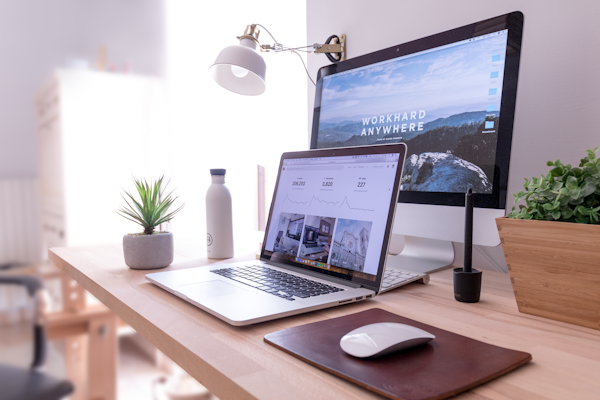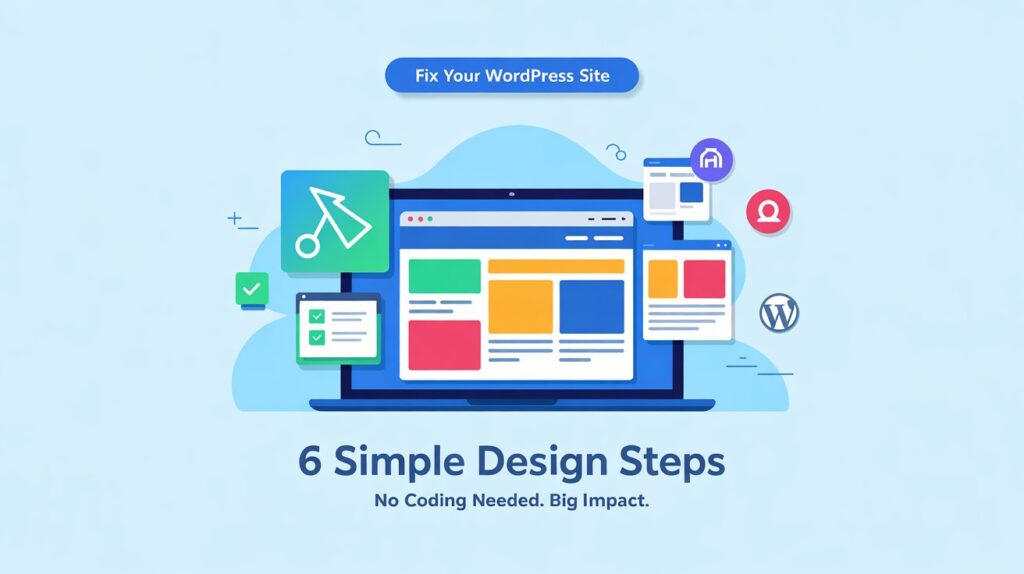A well-designed website can make people stay longer and trust your brand more. Visitors might leave quickly if your WordPress site looks messy or complicated. That’s why improving your web design is so important. But don’t worry—making your WordPress site look better doesn’t have to be complex or expensive.
Simple things you can do make a big difference. From choosing the right theme to using clear images, each step brings your website closer to being clean, helpful, and friendly to look at.
This article will discuss six easy steps to improve your WordPress web design. These tips are beginner-friendly and don’t require any coding knowledge.
Let’s begin!
1. Choose a Clean and Responsive Theme
Your WordPress site’s foundation is its theme, which guides its appearance and feel. Should your theme be messy or out-of-date, your website could seem unprofessional. A modern, neat layout will make your website appear fresh and user-friendly. Thus, search for straightforward, mobile-friendly, load-quickly themes.
“Responsive” refers to the theme changing to fit varying screen sizes—that of phones, tablets, and laptops. This is crucial because many people browse websites from mobile phones these days. A responsive theme guarantees your website appears decent on a small screen.
You can find free and paid themes in the WordPress theme library. Among the relatively well-known ones are Astra, Neve, and Hello Elementor. See how the theme looks before deciding. Avoid choosing one with too many ostentatious elements you won’t need. Simplicity is fundamental for your WordPress web design.

2. Use a Page Builder for Easy Customization
A page builder can become your friend if you don’t know how to code. Page builders allow you to design your site by dragging and dropping text, photos, buttons, and more. This will enable you to produce a professional-looking website without touching a single code line.
Common WordPress page builders are WPBakery, Elementor, and Beaver Builder. Elementor boasts a free edition and is very user-friendly. You can click and drag to create your homepage, about page, and even blog entries. It also displays a real-time version of your page.
Using a page builder lets you create a distinctive site that fits your taste. A few clicks will let you alter fonts, colors, and layouts. You need not be concerned about learning web design. You are in charge, and using it is enjoyable. Just watch out not to over-add elements. Maintaining simplicity will help your guests not feel overloaded.
3. Improve Your Website Navigation
Good navigation lets guests quickly locate what they are looking for. People may give up and leave if your menu is difficult to understand or use. That’s why the logical organization of your website is crucial.
Start by making your menu simple. Don’t add too many things. For instance, one may have a Home, About, Services, Blog, and Contact. Speak in simple, understandable words. Then, group several of your pages into dropdown menus. This keeps everything neat.
Also, make sure every page shows your menu in the same spot. Usually, this sits at the top of the site. Add a search bar if you have lots of content, especially for blogs or online stores. Your site will be more user-friendly, with straightforward navigation and a basic design. Visitors will be at ease and more likely to return.
4. Use High-Quality Images and Consistent Fonts
People’s impressions of your website also depend on typefaces and images. Too many diverse fonts and blurry images can make your site seem unkempt. Good, clean graphics will help your website appear more polished.
Choose crisp images that complement your content. If you don’t have pictures, services such as Unsplash or Pexels have free ones. Just watch out for overly large photos that slow down your site. Free tools like TinyPNG can help you reduce image size without sacrificing quality.
Regarding fonts, please choose one or two and commit yourself to them. If you prefer, use one font for headings and another for body text, but avoid going overboard. Verify if the text is readable easily. On most websites, simple fonts, including Open Sans, Roboto, or Lato, look good. Good photos and consistent typefaces help your website seem polished and professional.
5. Make Your Site Load Faster
Speed matters. A slow website can make visitors leave before it even finishes loading. You want your site to be quick and smooth. Luckily, there are simple steps to make your WordPress website faster.
First, pick a decent web host. Although cheap hosting seems great, it might slow down your site.
Then, install a WP Super Cache or W3 Total Cache caching plugin. These plugins enable faster website loading by saving copies of your pages. Cut the number of big photos and avoid installing too many plugins. Save the ones you truly need only.
Another advice is to use a content delivery network (CDN) like Cloudflare. A CDN speeds up your site’s load for users worldwide. A quick site enhances SEO, increases visitor experience, and causes people to remain longer.

6. Keep Everything Updated and Mobile-Friendly
Updates keep your website secure, speed it up, and fix problems. So, constantly update your theme, plugins, and PHP itself. Verify your site before updating, just in case something goes wrong.
Test your website also on several devices. Your site should appear decent on phones, tablets, and computers. Many visitors search the Internet using their phones and can leave your site if it is difficult for a small-screen user.
Check your site with Google’s free Mobile-Friendly Test tool. Your theme options or page builder will let you change something that seems off. A mobile-friendly website helps your site rank better in search engines and keeps visitors pleased.
Conclusion
Improving your WordPress web design doesn’t have to be hard. With a few basic improvements, your site will appear better, run faster, and draw more users. First, choose a tidy theme, then use a page builder. Sort your menu, select elegant fonts and photos, and quicken your website. Finally, everything must be kept current and mobile-friendly.
These directions are simple, even if you know nothing about WordPress. Take each step one at a time, and soon, your website will seem polished and professional. A better website increases visitor confidence and your success.

